If you’ve ever wondered how pressure washer nozzles work or are looking to find the right one for your cleaning tasks, this article has got you covered.
From understanding the different types of nozzles to the benefits of using them, we will explore everything you need to know.
We’ll also provide tips on how to choose the right nozzle for your pressure washer, as well as how to properly maintain and replace them.
Let’s dive in and learn more about this essential cleaning tool!
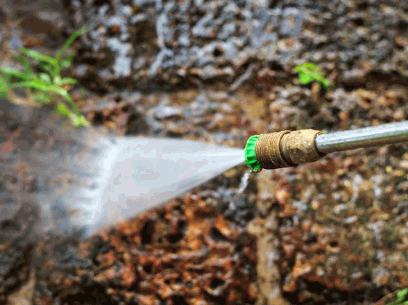
What Is A Pressure Washer Nozzle?
A pressure washer nozzle is a vital component of a pressure washer that regulates the spray pattern and pressure of the water, playing a critical role in the cleaning efficiency and effectiveness of the machine.
Uncover more: Can You Pressure Wash A Rug
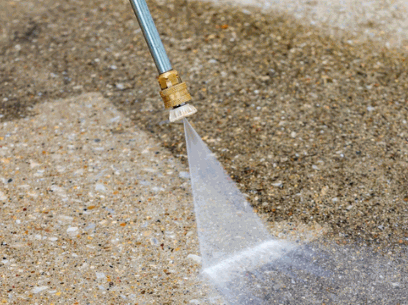
What Are The Different Types Of Pressure Washer Nozzles?
Pressure washer nozzles come in different types, each designed to handle specific cleaning tasks by altering the spray pattern and water pressure.
- One of the most popular types of pressure washer nozzles is the 0-degree nozzle, which produces a concentrated, powerful stream of water. It’s ideal for removing tough stains on concrete or blasting away debris from hard surfaces.
- The 15-degree nozzle, also known as the yellow nozzle, provides a slightly wider spray angle and is great for stripping paint or cleaning stubborn grime from surfaces.
- The 25-degree nozzle, or the green nozzle, offers a wider spray pattern, making it suitable for general cleaning tasks like washing vehicles or outdoor furniture without risking damage.
- For broader applications, the 40-degree nozzle is perfect. Also called the white nozzle, it delivers a gentle, wide spray that is ideal for rinsing delicate surfaces like windows or siding.
- The soap nozzle is designed specifically for applying detergents and soaps. This nozzle creates a low-pressure spray that is perfect for cleaning with cleaning solutions, ensuring a thorough and effective cleaning process.
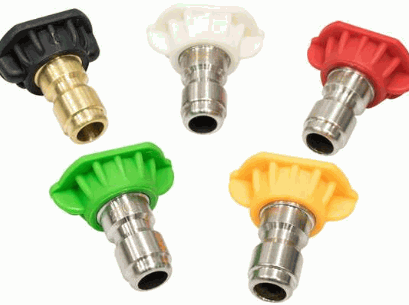
How Does A Pressure Washer Nozzle Work?
A pressure washer nozzle works by focusing the high-pressure water flow into a specific spray pattern, which enhances the cleaning power and efficiency of the pressure washer.
What Is The Purpose Of A Pressure Washer Nozzle?
The primary purpose of a pressure washer nozzle is to tailor the spray’s intensity and pattern to suit different cleaning tasks and surfaces.
By adjusting the nozzle settings, one can switch between a wide fan pattern for gentle cleaning of delicate surfaces like cars or outdoor furniture and a concentrated stream for tackling stubborn grime on concrete or brick. The versatility in spray angles provided by the nozzle chart allows users to customise their cleaning approach with ease, ensuring optimal results without causing damage to the surface being cleaned.
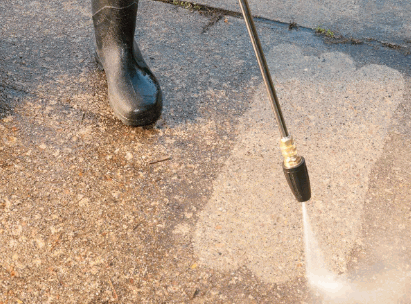
What Are The Components Of A Pressure Washer Nozzle?
A pressure washer nozzle comprises several key components, including the nozzle tip, which can be a flat tip or an angled tip, each designed for specific cleaning tasks.
The housing of the nozzle plays a crucial role in directing the water flow and pressure. It is typically made of durable materials like stainless steel or brass to withstand high pressure. The nozzle tip and housing work together to create the desired spray pattern, whether it is a pinpoint stream for tough stains or a wider fan pattern for general washing.
To maintain optimal performance, it’s essential to regularly check for any blockages or damage in the nozzle tip. A blocked tip can lead to inefficient cleaning and potential damage to the pressure washer. Regularly cleaning and inspecting the nozzle components can prevent issues and ensure consistent performance.
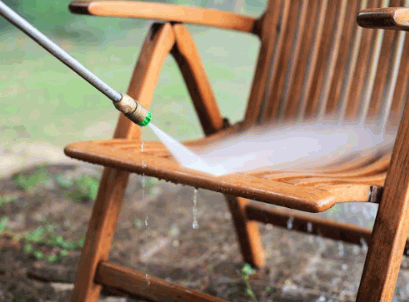
What Are The Benefits Of Using A Pressure Washer Nozzle?
Using a pressure washer nozzle offers several benefits, including increased cleaning power, versatility in handling different cleaning tasks, and significant time and energy savings.
Increased Cleaning Power
One of the primary benefits of using a pressure washer nozzle is the increased cleaning power that allows efficient removal of dirt and grime from various surfaces.
High pressure combined with the right nozzle size plays a crucial role in maximising the effectiveness of a pressure washer. The force generated by the high-pressure stream ensures that tough stains and debris are blasted away with ease.
For instance, when cleaning concrete driveways or pavements, a high-pressure nozzle can quickly eliminate deep-seated dirt and oil stains. Similarly, when dealing with delicate surfaces like wooden decks or cars, using a nozzle with a lower pressure setting prevents damage while still achieving a thorough clean.
The correct nozzle selection not only enhances the cleaning efficiency but also reduces the overall cleaning time, making the task more manageable and less strenuous.
Versatility
Pressure washer nozzles offer versatility by providing a range of spray patterns and intensities to suit different cleaning jobs.
For instance, using a 0-degree nozzle creates a powerful and concentrated stream, ideal for removing tough stains on concrete surfaces or blasting away grime from metal. On the other hand, a 25-degree nozzle is more versatile and suitable for general cleaning tasks such as washing cars or rinsing off decks without causing damage. If you need a wider coverage area, a 40-degree nozzle is perfect for gently washing windows or siding.
Time And Energy Saving
Using the correct pressure washer nozzle can save both time and energy by making the cleaning process more efficient and reducing the need for repeated efforts.
Regarding tackling various surfaces and grime levels, the pressure washer nozzle plays a crucial role in determining the effectiveness of the cleaning operation. Different nozzles offer specific spray patterns and strengths, allowing you to tailor your cleaning approach according to the task at hand.
Choosing the appropriate nozzle not only ensures targeted cleaning but also prevents any potential damage that may occur from using the wrong nozzle. By avoiding nozzle fails, you can maintain high cleaning efficiency, extend the lifespan of your equipment, and conserve water and detergent resources in the process.
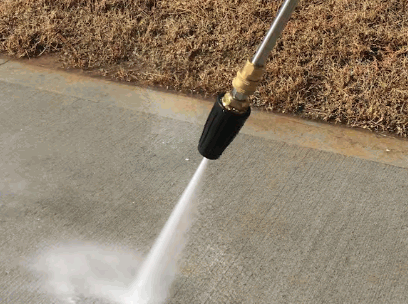
How To Choose The Right Pressure Washer Nozzle?
Selecting the correct pressure washer nozzle involves taking into account several factors, such as the pressure washer’s PSI and GPM, the type of cleaning task, and the desired spray pattern and angle.
Consider The PSI And GPM Of Your Pressure Washer
When choosing a pressure washer nozzle, it’s crucial to consider the PSI (pounds per square inch) and GPM (gallons per minute) ratings of your pressure washer.
These two factors, PSI and GPM, play a significant role in determining the performance of different nozzle sizes. Higher PSI ratings indicate more pressure, making it ideal for tougher cleaning tasks such as removing stubborn dirt from concrete surfaces.
On the other hand, GPM reflects the amount of water flow, impacting the coverage and rinsing capability of the nozzle. Pairing the right PSI and GPM ensures efficient cleaning without causing damage to delicate surfaces.
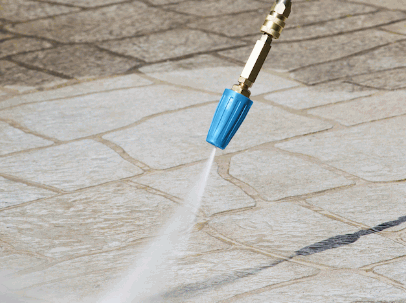
Determine The Type Of Cleaning Task
The type of cleaning task at hand is a major factor in determining the appropriate pressure washer nozzle size and type.
For example, when dealing with stubborn dirt and grime on concrete surfaces, a rotary nozzle with a narrow spray angle would be most effective due to its concentrated power.
On the other hand, if you are looking to gently wash your car or delicate garden furniture, opting for a fan nozzle with a wider spray angle would prevent unwanted damage.
It’s crucial to match the nozzle size to the surface material as well – using a small black nozzle on a large patio area may result in inefficient cleaning and wasted time.
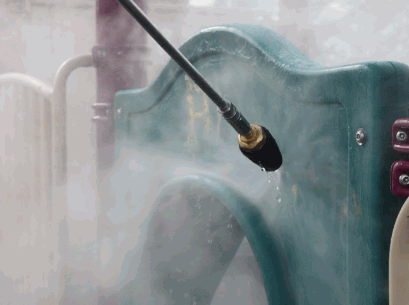
Know The Spray Pattern And Angle
Understanding the spray pattern and angle of a pressure washer nozzle is essential for selecting the right nozzle tip for your cleaning needs.
Pressure washer nozzles come in various spray patterns and angles, each serving a specific purpose. The most common spray patterns include 0-degree, 15-degree, 25-degree, 40-degree, and a 65-degree wide angle. These patterns determine the width and intensity of the spray. For example, a 0-degree nozzle delivers a concentrated jet for tough stains, while a 40-degree nozzle provides a wider coverage for general cleaning. Regarding angles, nozzle tips like fan or flat nozzles affect the cleaning effectiveness and reach of the spray. The flat tip is ideal for larger surface areas, while a fan tip covers a broader space with less pressure focus.
How To Maintain And Replace Pressure Washer Nozzles?
Proper maintenance and timely replacement of pressure washer nozzles are crucial for ensuring their optimal performance and longevity.
Regular Cleaning And Inspection
Regular cleaning and inspection of pressure washer nozzles are essential to prevent nozzle blockages and ensure consistent performance.
- Before starting the cleaning process, make sure to disconnect the pressure washer from the power source and release any remaining pressure in the system by squeezing the trigger.
- Then, carefully remove the nozzle from the wand or lance.
- Next, inspect the nozzle for any visible debris or obstructions, using a fine needle or wire to clear any blockages. Thoroughly rinse the nozzle with clean water to ensure all particles are removed.
- Reassemble the nozzle and test the pressure washer to confirm the correct functionality.
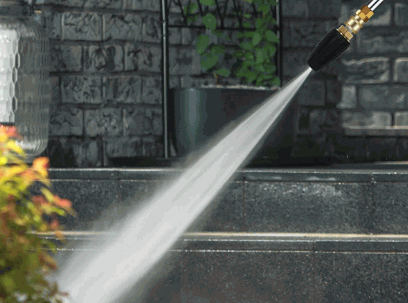
Proper Storage
Proper storage of pressure washer nozzles helps keep them clean and free from damage, extending their lifespan and maintaining their performance.
When not in use, it is recommended to store pressure washer nozzles in a dry and well-ventilated area to avoid moisture build-up, which can lead to corrosion. Avoiding exposure to direct sunlight can prevent material degradation and colour fading.
Using a nozzle holder or organiser is a clever way to keep them organised and protected from accidental damage. Another crucial aspect is to avoid storing nozzles near chemicals, oils, or other potentially harmful substances that could contaminate them, leading to blockages and reduced efficiency.
Replacing Worn Out Or Damaged Nozzles
Replacing worn-out or damaged pressure washer nozzles is crucial to maintaining the efficiency and effectiveness of your pressure washer.
One clear sign that you need to replace a nozzle is visible wear and tear, such as cracks, chips, or corrosion. Another indication is when you notice inconsistent spray patterns, including uneven pressure or strange spraying angles.
When selecting a new nozzle, consider the desired pressure level and spray pattern for your specific cleaning tasks. Refer to the manufacturer’s guidelines or seek advice from a professional to ensure compatibility.
Proper installation is key to optimal performance. Start by turning off the pressure washer, detaching the old nozzle, and securely attaching the new one. Test the new nozzle for leaks and functionality before resuming your cleaning tasks.



